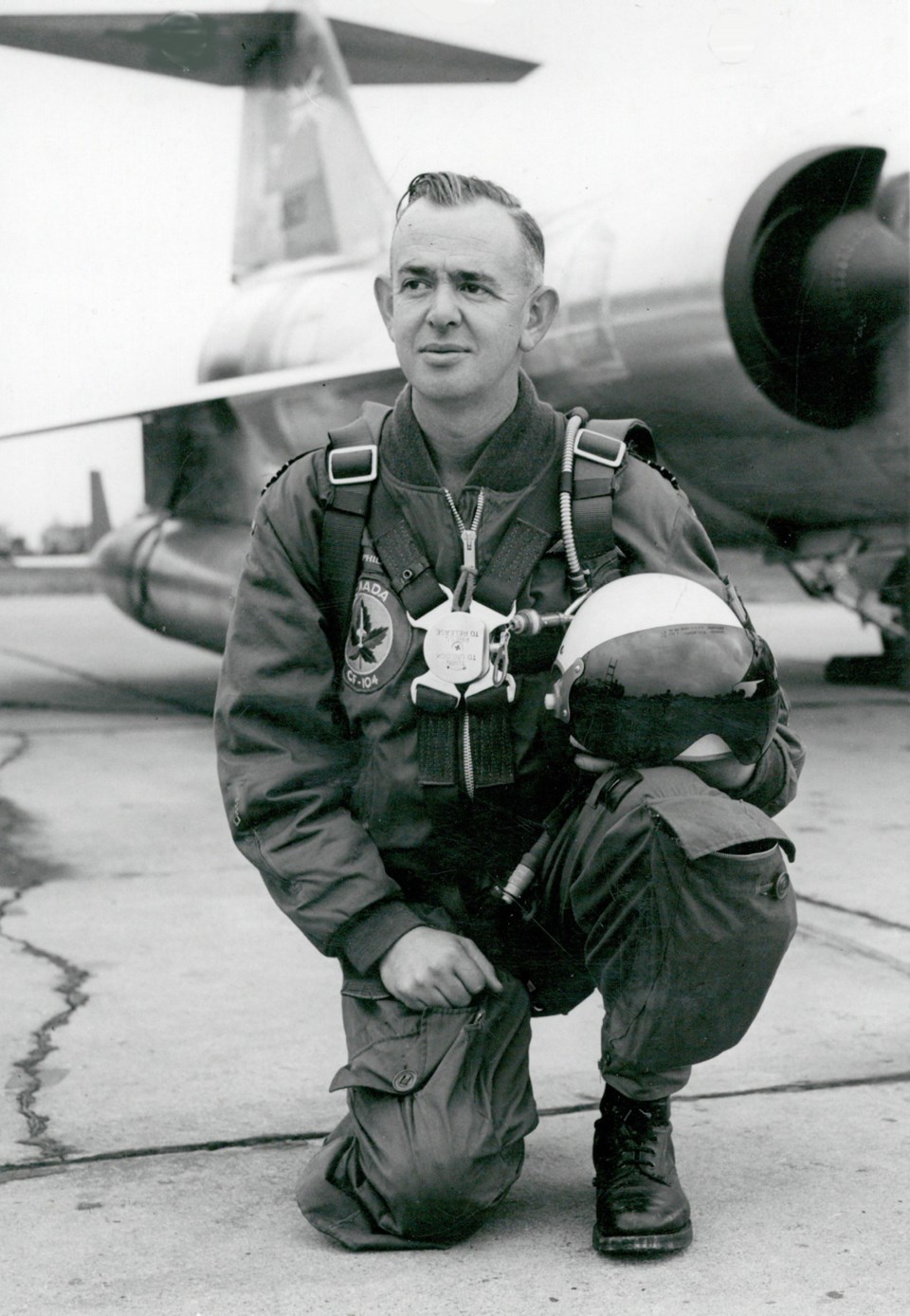When Col. Owen (O.B.) Philp got the Snowbirds aerobatics team off the ground they could call themselves anything but an “aerobatics” team.
“Back then, national defence headquarters said, ‘No aerobatics,’ ” said Maj. Gen. (retired) Glen Younghusband, the very first Snowbirds team leader.
“We got around that by calling it by different names,” said Younghusband in a telephone interview with the Times Colonist. “So, for example, instead of ‘loops,’ we flew ‘slanted 360s.’ ”
In 1971, Younghusband became the first pilot to lead the Snowbirds. But he gives most credit for the team’s formation to Philp, who never flew as a member of the team but is now referred to as “The Father of the Snowbirds.”
“He had always felt a Canadian air force formation flying team would be popular with the Canadian public,” said Younghusband. “And [Philp] was one of those people who, if he decided he was going to do something, he would go ahead and do it.
“He would figure out a way, regardless of regulations or higher authorities.”
Philp, who died in 1995 at the age of 72, was inducted into the Canadian Aviation Hall of Fame on June 4 at a ceremony at Toronto’s Pearson International Airport.
Although he was most famous for his Snowbird connection, his flying career is noteworthy. When he retired in 1973, settling on a eight-hectare North Saanich property in sight of Victoria International Airport, his log books showed he had accumulated 8,246 hours in 79 different military planes.
At the induction ceremony, a Snowbird Tutor jet was on display, flown in by current commander Lt.-Col. Chris England.
Philp, an only child born in Vancouver in 1923, had roots in aviation going back a generation. His father, Bartley Philp, flew in the First and Second World Wars as a ferry pilot for the Royal Canadian Air Force. Bartley’s son, Owen Bartley Philp, enlisted in Winnipeg in 1942, where he earned the nickname O.B., which stuck throughout his life.
After earning his pilot’s wings, Philp was posted overseas and by the age of 20 was flying paratroopers during the Allied invasion of Normandy. In 1944-45, he flew the Douglas DC-3 Dakota aircraft, taking supplies from India into Burma.
Following the war, Philp continued with the RCAF. He served in search-and-rescue units, attended test-pilot school in England and was a member of the accident investigation bureau. After training on the CF-104 Starfighter, he was posted to West Germany to command the RCAF 434 (Bluenose) Squadron.
After returning to Canada, Philp was chosen to organize an aerobatic team for Canada’s Centennial in 1967. Called the Golden Centennaires, the team flew eight Tutor jet trainers. It also contained a CF-104 Starfighter, a CF-101 Voodoo, two Avro 504K biplanes and a Red Knight T-33. The team completed 100 shows in Canada and the U.S. that year.
In 1969, Philp — by then a colonel — took command of CFB Moose Jaw. There he discovered, in storage, the Tutor jets used by the Golden Centennaires and the Snowbirds were conceived.
Younghusband remembers Philp talked about all the things that could be achieved with an aerobatic team: better morale, good will with the public and increased recruitment.
“There were a lot of good reasons to have a formation-flying team and [Philp] decided we should have one,” he said. “He called me into his office and said, ‘I want you to lead it.’
“When he said he wanted you to do something, then you were always better off doing it.”
When he died, the Snowbirds saluted their founder with a final flypast over his property.
